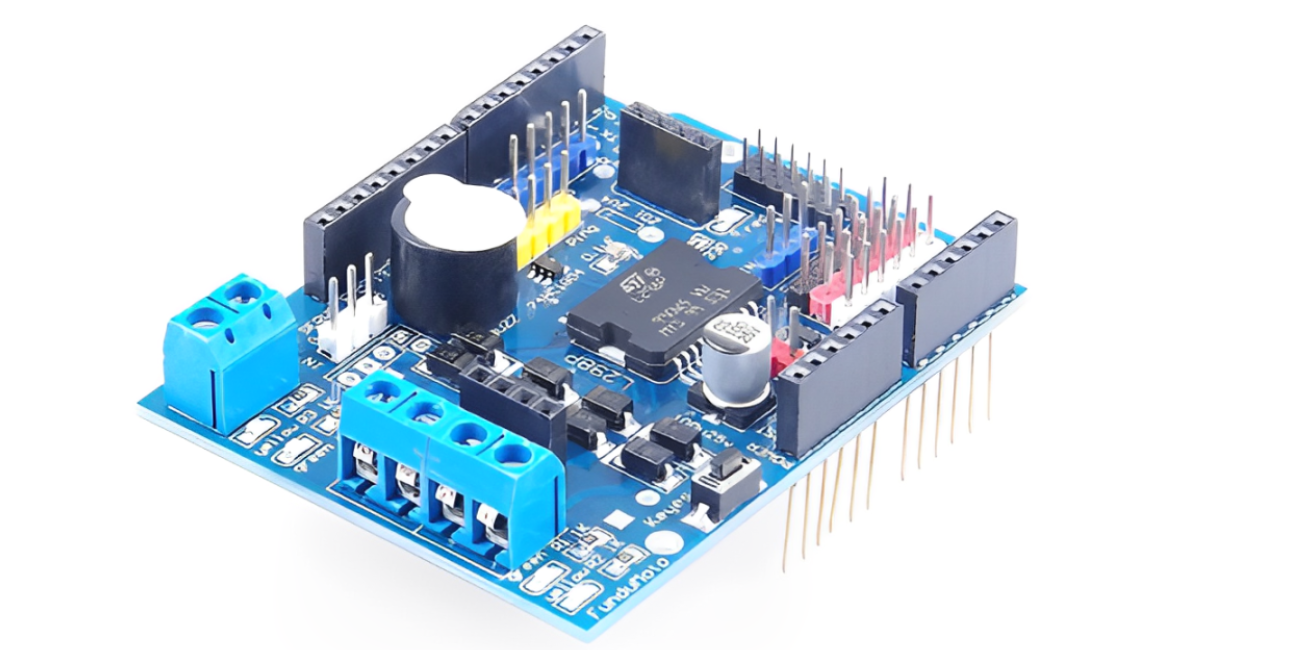The L298P Motor Driver Shield is a popular and versatile component used to control DC motors with an Arduino board. This shield provides a convenient and efficient way to drive two DC motors simultaneously, making it invaluable for a wide range of robotics and automation projects.
What is the L298P Motor Driver Shield?
The L298P Motor Driver Shield is an expansion board that plugs directly onto the top of an Arduino board. It utilizes the L298P integrated circuit (IC), a dual full-bridge driver capable of driving two DC motors independently.
Key Features of the L298P Motor Driver Shield:
- Dual Channel: Controls two DC motors simultaneously, allowing for independent control of each motor's direction and speed.
- High Current Capability: Can handle significant motor currents, making it suitable for powering various motors, including those used in robotics and automation projects.
- Easy to Use: Simple to connect and control using Arduino code, making it accessible to both beginners and experienced users.
- Breadboard Friendly: Many L298P shields are designed to be breadboard compatible, facilitating prototyping and experimentation.
- Protection Features: Often includes features like overcurrent protection and thermal shutdown to safeguard the driver and connected components.
How the L298P Motor Driver Shield Works:
The L298P IC within the shield acts as a bridge between the Arduino's digital output pins and the motor. By controlling the logic levels on these pins, you can:
- Control Motor Direction: By setting the appropriate logic levels on the input pins, you can reverse the direction of each motor.
- Control Motor Speed: By using Pulse Width Modulation (PWM) signals from the Arduino, you can adjust the speed of each motor. PWM effectively varies the amount of power delivered to the motor, resulting in smooth and controlled speed adjustments.
Applications of the L298P Motor Driver Shield:
- Robotics: Driving the wheels of robots, controlling robotic arms, and actuating robotic grippers.
- Automation: Controlling conveyor belts, linear actuators, and other components in automated systems.
- DIY Projects: Powering a wide range of DIY projects, including line-following robots, obstacle avoidance robots, and remote-controlled vehicles.
- Educational Purposes: A valuable tool for learning about motor control, robotics, and electronics.
Using the L298P Motor Driver Shield with Arduino:
- Connect the Shield: Plug the L298P Motor Driver Shield directly onto the top of your Arduino board.
- Connect Motors: Connect the motor wires to the appropriate terminals on the shield. Refer to the shield's documentation for the correct connections.
- Connect Power Supply: Connect an external power supply to the shield. Ensure the power supply can provide sufficient current for the connected motors.
- Write Arduino Code: Write an Arduino program to control the motors. Utilize the digital Write() and analog Write() functions to control the direction and speed of each motor.
Tips for Using the L298P Motor Driver Shield:
- Heat Dissipation: Ensure proper heat dissipation by using heatsinks on the L298P IC, especially when driving high-current motors.
- Power Supply: Use a power supply with sufficient current capacity to avoid voltage drops and erratic motor behavior.
- Ground Connections: Maintain a good ground connection between the Arduino, the shield, and the power supply.
- Refer to Datasheets: Always consult the datasheets for the L298P IC and the specific motor driver shield you are using for detailed information and specifications.
Conclusion:
The L298P Motor Driver Shield is a valuable asset for anyone working with Arduino and DC motors. Its ease of use, versatility, and affordability make it a popular choice for a wide range of projects. By understanding its features, capabilities, and limitations, you can effectively utilize this shield to control your motors and bring your robotic and automation ideas to life.
Disclaimer: This blog post is for informational purposes only. It is recommended to consult the manufacturer's datasheets and exercise caution when working with electronics.
I hope this comprehensive guide helps you effectively utilize the L298P Motor Driver Shield with your Arduino projects!

